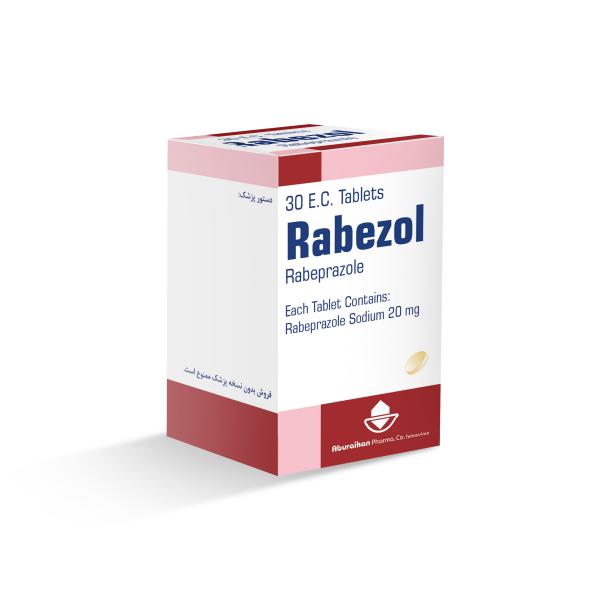Rabezol®
Rabeprazole
tablet
Gastroesophageal reflux disease (GERD), H. pylori eradication, Zollinger-Ellison syndrome, Peptic ulcer disease, treatment and secondary prevention
Mechanism of Action:
Potent proton pump inhibitor; suppresses gastric acid secretion by inhibiting the parietal cell H+/K+ ATP pump
Method of Administration:
Gastroesophageal reflux disease (GERD):
20 mg once daily
- pylori eradication:
20 or 40 mg twice daily as part of an appropriate combination regimen with antibiotics.
Zollinger-Ellison syndrome:
60 mg once daily. If needed, may titrate upward early in therapy, using divided doses as appropriate; once acid output has been controlled, gradual dose reductions are usually possible
Peptic ulcer disease, treatment and secondary prevention:
20 mg once daily
Notes
Contraindications:
Hypersensitivity (eg, anaphylaxis, anaphylactic shock, angioedema, bronchospasm, acute tubulointerstitial nephritis, urticaria) to rabeprazole, other substituted benzimidazoles, or any component of the formulation
Interactions:
Bisphosphonate Derivatives: Inhibitors of the Proton Pump (PPIs and PCABs) may diminish the therapeutic effect of Bisphosphonate Derivatives. Risk C: Monitor therapy
Cefuroxime: Inhibitors of the Proton Pump (PPIs and PCABs) may decrease the absorption of Cefuroxime. Risk X: Avoid combination
Tacrolimus (Systemic): Inhibitors of the Proton Pump (PPIs and PCABs) may increase the serum concentration of Tacrolimus (Systemic). Risk C: Monitor therapy
Pregnancy and Lactation:
PPIs may be used when clinically indicated in pregnancy.
The decision to continue or discontinue breastfeeding during therapy should take into account the risk of infant exposure, the benefits of breastfeeding to the infant, and benefits of treatment to the mother.
Warning and Precaution:
- Atrophic gastritis: Long-term omeprazole therapy has caused atrophic gastritis (by biopsy); this may also occur with rabeprazole.
- Carcinoma: No reports of adenomatoid, dysplastic or neoplastic changes of enterochromaffin-like (ECL) cells in the gastric mucosa have occurred.
- Clostridioides difficile-associated diarrhea (CDAD): Use of proton pump inhibitors (PPIs) may increase risk of CDAD, especially in hospitalized patients; consider CDAD diagnosis in patients with persistent diarrhea that does not improve. Use the lowest dose and shortest duration of PPI therapy appropriate for the condition being treated.
- Cutaneous and systemic lupus erythematosus: Has been reported as new onset or exacerbation of existing autoimmune disease; most cases were cutaneous lupus erythematosus (CLE), most commonly, subacute CLE (occurring within weeks to years after continuous therapy). Systemic lupus erythematosus (SLE) is less common (typically occurs within days to years after initiating treatment) and occurred primarily in young adults up to the elderly. Discontinue therapy if signs or symptoms of CLE or SLE occur and refer to specialist for evaluation; most patients improve 4 to 12 weeks after discontinuation of rabeprazole.
- Fractures: Increased incidence of osteoporosis-related bone fractures of the hip, spine, or wrist may occur with proton pump inhibitor (PPI) therapy. Patients on high-dose (multiple daily doses) or longterm therapy (≥1 year) should be monitored. Use the lowest effective dose for the shortest duration of time, use vitamin D and calcium supplementation, and follow appropriate guidelines to reduce risk of fractures in patients at risk.
Adverse Reactions:
>10%: Gastrointestinal: Abdominal pain (children: 16%; adolescents and adults: ≤4%), diarrhea (children and adolescents: 5% to 21%; adults:
Storage:
Store below 30ºC and protect from light and moisture.

